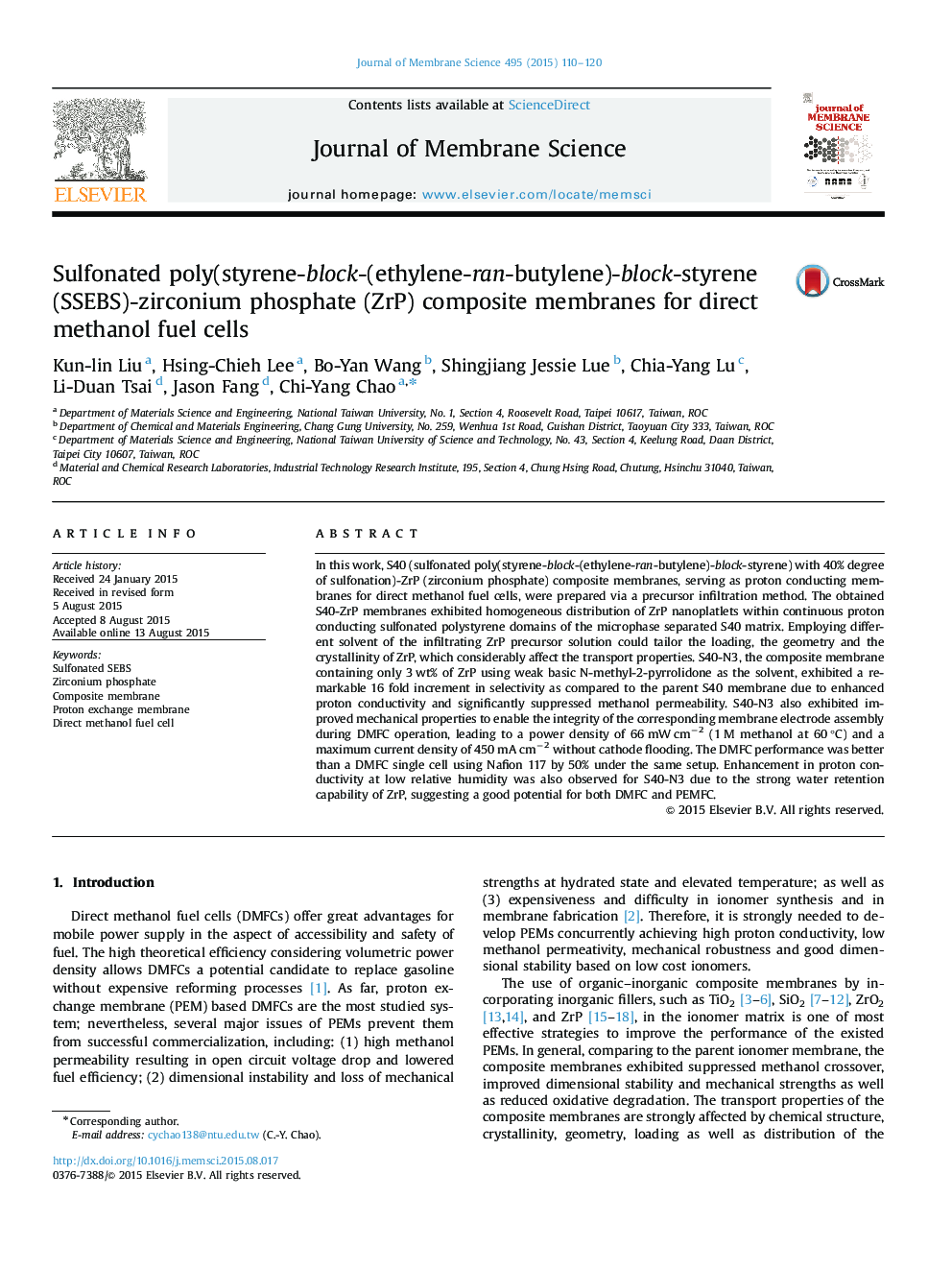| کد مقاله | کد نشریه | سال انتشار | مقاله انگلیسی | نسخه تمام متن |
|---|---|---|---|---|
| 632704 | 1456004 | 2015 | 11 صفحه PDF | دانلود رایگان |

• A tunable precursor infiltration method was developed.
• ZrP nanoplatelets were homogeneously distributed in proton conducting domains.
• Morphology of composite membranes and properties of infilled ZrP could be tailored.
• Microstructure-transport/mechanical property interplays were systematically studied.
• 16 Fold increment in selectivity and improved DMFC performance were achieved.
In this work, S40 (sulfonated poly(styrene-block-(ethylene-ran-butylene)-block-styrene) with 40% degree of sulfonation)-ZrP (zirconium phosphate) composite membranes, serving as proton conducting membranes for direct methanol fuel cells, were prepared via a precursor infiltration method. The obtained S40-ZrP membranes exhibited homogeneous distribution of ZrP nanoplatlets within continuous proton conducting sulfonated polystyrene domains of the microphase separated S40 matrix. Employing different solvent of the infiltrating ZrP precursor solution could tailor the loading, the geometry and the crystallinity of ZrP, which considerably affect the transport properties. S40-N3, the composite membrane containing only 3 wt% of ZrP using weak basic N-methyl-2-pyrrolidone as the solvent, exhibited a remarkable 16 fold increment in selectivity as compared to the parent S40 membrane due to enhanced proton conductivity and significantly suppressed methanol permeability. S40-N3 also exhibited improved mechanical properties to enable the integrity of the corresponding membrane electrode assembly during DMFC operation, leading to a power density of 66 mW cm−2 (1 M methanol at 60 °C) and a maximum current density of 450 mA cm−2 without cathode flooding. The DMFC performance was better than a DMFC single cell using Nafion 117 by 50% under the same setup. Enhancement in proton conductivity at low relative humidity was also observed for S40-N3 due to the strong water retention capability of ZrP, suggesting a good potential for both DMFC and PEMFC.
Figure optionsDownload high-quality image (140 K)Download as PowerPoint slide
Journal: Journal of Membrane Science - Volume 495, 1 December 2015, Pages 110–120